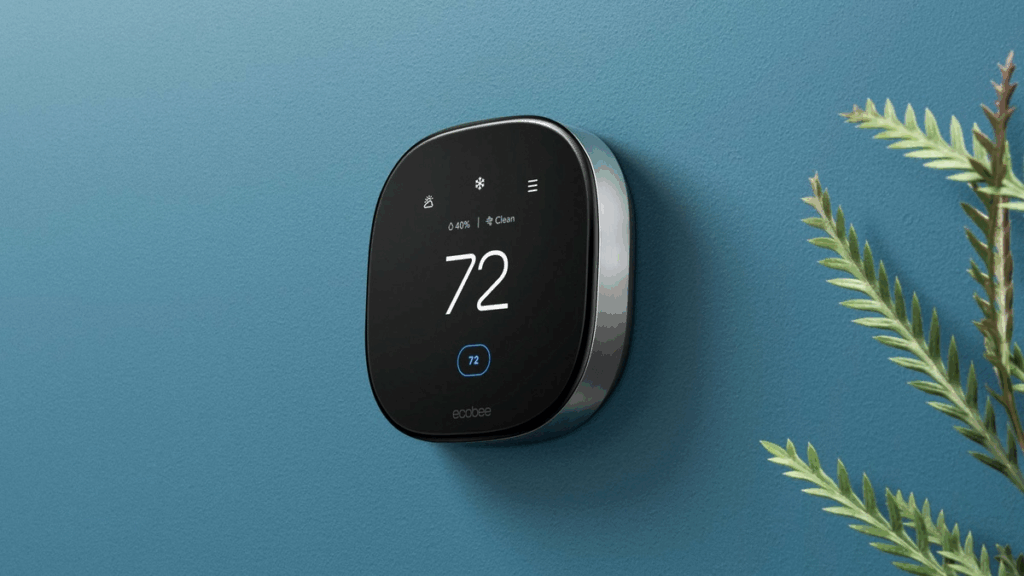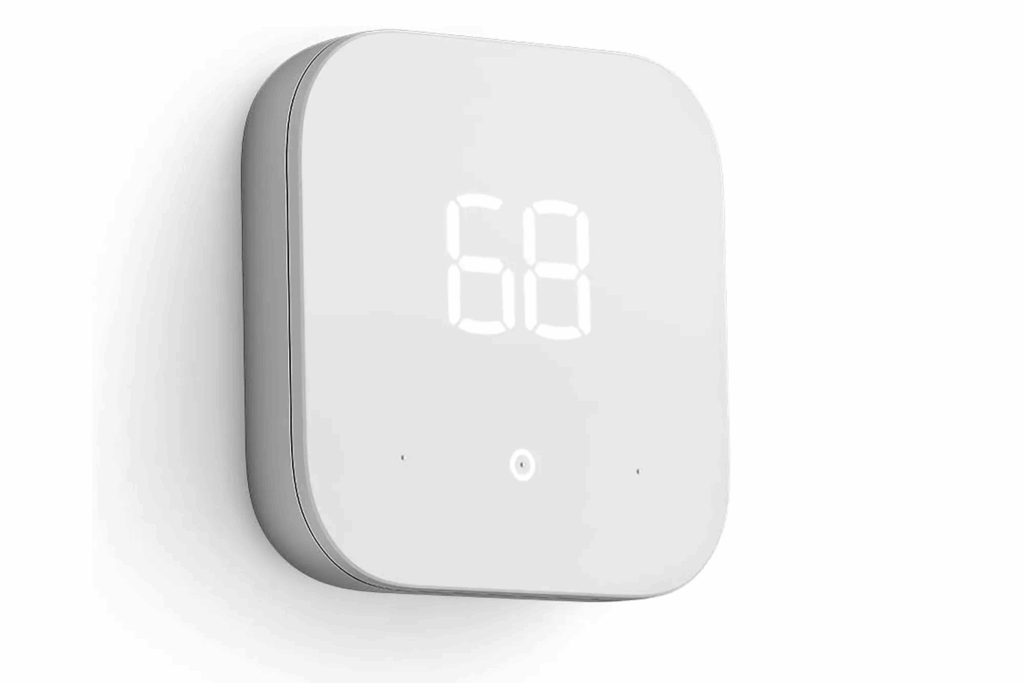Remember when adjusting the temperature meant a trip across the room? Those days are long gone. Today’s smart thermostat options transform your heating and cooling experience with intuitive controls, energy-saving features, and seamless integration with your existing smart home setup.
But which one deserves space on your wall? With dozens of options flooding the market in 2025, finding the perfect match requires navigating a maze of features, compatibility issues, and price points. Fear not! We’ve done the heavy lifting for you.
Why Smart Thermostats Are a Game-Changer
Remember that “aha” moment when smartphones replaced flip phones? Smart thermostats deliver that same revolutionary leap for home climate control. They’re not just fancy temperature dials—they’re intelligent home managers that learn your preferences, adapt to your schedule, and potentially slash your energy bills.
Imagine walking into a perfectly heated home on a frigid winter evening without wasting energy all day. Or cooling only the rooms you’re using during a summer heatwave. That’s the magic of smart climate control.
So what comes next for these wall-mounted gadgets? Beyond 2025, thermostat tech keeps charging ahead at a fast pace. Companies are baking in smarter AI that doesn’t just memorize your habits—it starts guessing needs before you do. Think weather predictions, who’s home, even events on your calendar. Picture your system pre-cooling the house before a heatwave rolls in, or tweaking temps after a tough workout (thanks to synced fitness tracker data).
Health-focused features are getting interesting too. Future models might fine-tune humidity and heat to help you sleep deeper or ease allergy flare-ups. Worried about privacy? Fair point. But brands are pivoting to local data storage, keeping info on devices instead of floating in the cloud.
Pros and cons of smart thermostat:
| Pros | Cons |
| Energy savings of 8-15% on heating/cooling bills | Initial investment cost |
| Remote temperature control from anywhere | Some models require professional installation |
| Automated scheduling based on your habits | May require C-wire or adapter kit |
| Detailed energy usage reports | Learning curve for advanced features |
| Integration with other smart home devices | Potential compatibility issues with older HVAC systems |
| Room-by-room temperature control (with sensors) | Privacy concerns with data collection |
| Voice control through smart assistants | Dependent on reliable Wi-Fi connection |
| Maintenance alerts and system monitoring | Some features require subscription services |
Top Smart Thermostat Picks for 2025

The best smart thermostat of 2025 isn’t necessarily the most expensive or feature-packed—it’s the one that perfectly matches your home setup and lifestyle needs. After extensive testing, these models stand above the rest.
- Nest Learning Thermostat (4th Gen) – Still the gold standard for intelligence and design, Google’s flagship thermostat continues to impress with enhanced AI learning and Matter compatibility. The sleek display and intuitive controls make it a showpiece, not just a utility.
- Ecobee Smart Premium – With built-in air quality monitoring and voice assistant capabilities, this powerhouse does more than just control temperature. The included room sensors provide unmatched comfort throughout your home.
- Amazon Smart Thermostat – A surprising contender from the e-commerce giant, offering Alexa integration at a fraction of competitors’ prices while still delivering core functionality.
- Honeywell Home T9 – With industry-leading range for its remote sensors, this model excels in larger homes where consistent temperature throughout matters most.
- Tado Smart Thermostat V3+ – European homeowners rejoice—this system offers exceptional compatibility with diverse heating systems and sophisticated geofencing.
Best Budget Smart Thermostat

Not ready to spend three figures on temperature control? The cheap smart thermostat market has matured significantly in 2025.
The Wyze Thermostat continues to dominate this category with an almost impossibly low price point while offering 90% of premium features. You’ll get scheduling, remote control, and even rudimentary learning capabilities—all wrapped in a clean, modern design that belies its budget status.
For just a few dollars more, the Amazon Smart Thermostat delivers exceptional value with Alexa integration and surprisingly accurate temperature sensing. What you’ll sacrifice compared to premium models is mainly the quality of materials and some advanced learning capabilities—well worth the trade-off for budget-conscious homeowners.
Key Features to Prioritize in a Smart Thermostat
Shopping for a smart thermostat can feel overwhelming with endless feature lists.
First, compatibility reigns supreme. Before falling in love with any model, confirm it works with your HVAC system, home network, and other smart devices. The arrival of Matter compatibility in 2023-2024 has simplified this considerably, but it’s not universal yet.
Next, consider learning capabilities. The best systems don’t just follow schedules—they actively learn your patterns and adapt accordingly. This intelligence difference can mean substantial energy savings over time.
Finally, don’t overlook the interface—both physical and digital. You’ll interact with your thermostat daily, so clunky controls or confusing apps quickly become frustrating.
Remote and Room Sensors
Think one temperature sensor is enough? Think again. A smart thermostat with room sensors transforms comfort levels throughout your home.
These small auxiliary devices detect temperature (and sometimes occupancy) in different rooms, allowing your system to prioritize comfort where you actually are, not just where the thermostat happens to be mounted. Bedrooms too cold while the living room is perfect? Room sensors solve this common issue.
The Ecobee Smart Premium includes one sensor in the box (with options to add more), while the Honeywell Home T9 offers perhaps the most powerful smart thermostat with remote sensor technology, with a 200-foot range that works through walls.
The difference isn’t just comfort—it’s efficiency. Why heat or cool rooms nobody’s using? Advanced models use occupancy detection to automatically adjust priorities based on which rooms are actually occupied.
Humidity Control

Comfort isn’t just about temperature. Let’s face it—that clammy summer air or winter dryness cracking your skin matters too. A smart thermostat with humidity control handles both, balancing moisture levels without fuss.
Take Ecobee Smart Premium. It stands out by tracking humidity in real time and adjusting connected systems to keep things steady. Honeywell T10 Pro also nails this when hooked up to the right gear, offering similar precision.
But it’s not just about feeling cozy. Bad humidity can mess with your home. High levels invite mold; low ones warp floors or furniture. Getting moisture right isn’t a luxury—it’s about avoiding costly fixes down the line.
Smart Home Integration
A thermostat that can’t talk to your other smart devices is missing half its potential. The most valuable integrations include:
- Voice assistants (Alexa, Google Assistant, Siri) for hands-free control
- Smart lighting systems for coordinated scenes (like “Movie Night” that dims lights and sets perfect temperature)
- Home security systems that adjust temperature when you arm/disarm
- Smart window coverings that coordinate with heating/cooling efforts
Google’s Nest lineup naturally excels with Google Home integration, while Ecobee offers perhaps the most agnostic approach, playing nicely with nearly every smart home ecosystem available.
Smart Thermostats for Unique Needs
Not all homes are created equal. Standard smart thermostats work perfectly in conventional forced-air systems, but what about less common setups?
For Heat Pump Systems
Heat pumps require specialized control logic different from traditional furnaces. The smart thermostat for heat pump systems must understand how to manage auxiliary heat strips efficiently and navigate defrost cycles without wasting energy.
The Ecobee Smart Premium handles this complexity exceptionally well, with algorithms specifically designed for heat pump efficiency. Nest’s offerings have improved substantially in this area as well, with the 4th generation Learning Thermostat featuring enhanced heat pump management.
Installing on a heat pump? Make sure to select the proper system configuration during setup—an incorrectly configured thermostat can actually increase energy usage rather than decrease it.
Line Voltage and Baseboard Heating

Electric baseboard, ceiling cable, or in-floor heating systems pose unique challenges since they operate at higher voltages than typical thermostats can handle.
A dedicated line voltage smart thermostat like the Mysa Smart Thermostat transforms these older heating systems with intelligence. With a sleek, minimalist design and sophisticated scheduling capabilities, Mysa brings modern control to high-voltage systems.
For multi-zone baseboard setups, the Sinopé line of smart baseboard thermostat controllers offers exceptional value, allowing independent control of multiple heating zones through a single app interface. The clean design won’t clash with your décor, either.
Battery-Powered Thermostats

Wiring limitations? No problem. A battery powered smart thermostat offers smart functionality without complex installation requirements.
The Honeywell T9 and T10 Pro models can operate on battery power, though some features may be limited. For truly wire-free operation, the Nest Thermostat E (where still available) offers an elegant solution when paired with a C-wire adapter.
Battery life typically ranges from 6-12 months depending on usage patterns and Wi-Fi connection stability. Most models provide ample warning before batteries need replacement, preventing unexpected system shutdowns.
No C-Wire Required

The common wire (C-wire) powers many smart thermostats, but older homes often lack this connection. Smart thermostats without c wire capabilities open up possibilities for these homes.
The Amazon Smart Thermostat and Ecobee models include power adapter kits that create a virtual C-wire connection using your existing wiring. Google’s newer Nest models can often operate without a C-wire in many system configurations.
Be cautious, though—some no-C-wire solutions use power stealing technology that can cause system issues in certain HVAC setups. When in doubt, consult a professional about adding a proper C-wire for the most reliable operation.
How to Install Your Smart Thermostat
Ready to install smart thermostat technology in your home? Most models are designed for DIY installation, typically taking 30-45 minutes.
Before starting:
- Turn off power to your HVAC system at the breaker
- Take a photo of your existing wiring for reference
- Check compatibility using the manufacturer’s online tools
- Download the associated app before beginning physical installation
The basic process involves:
- Removing your old thermostat faceplate and backing
- Labeling wires according to the terminals they connect to
- Attaching the new mounting plate
- Connecting wires to the corresponding terminals
- Attaching the display unit
- Powering up and following on-screen setup instructions
Most manufacturers provide excellent video tutorials specific to their models. Ecobee and Nest particularly excel with step-by-step guidance through mobile apps that make installation nearly foolproof.
Troubleshooting Installation Issues
Even the best-planned installations sometimes hit snags. Common issues include:
- System won’t power on: Check circuit breakers first, then verify wire connections. Many smart thermostats require a few minutes to charge initially before displaying anything.
- Wi-Fi connection failures: Position your thermostat within reliable range of your router. Some models struggle with certain network configurations—consult the manufacturer’s Wi-Fi troubleshooting guide.
- Incorrect temperature readings: Allow 1-2 hours for sensors to calibrate after installation. If problems persist, check for air drafts or heat sources near the thermostat location.
- HVAC system short-cycling: This often indicates incompatibility or incorrect wiring. Power down immediately and double-check your connections against the specific wiring diagram for your system.
When in doubt, most manufacturers offer excellent phone support with technicians who can walk you through troubleshooting steps.
Smart Thermostats for Renters: What to Know
Don’t own your home? You’re not excluded from smart temperature control.
First, check your lease. Many landlords allow thermostat replacements as long as you store the original and reinstall it when moving out. Some progressive property managers even welcome the upgrade since it protects their HVAC systems through better control.
For strict no-modification situations, consider:
- Portable sensors that work alongside your existing thermostat
- Smart AC controllers for window or portable units
- Smart vents that adjust airflow without changing the central thermostat
The Sensibo Sky and Amazon Smart Air Quality Monitor offer partial smart functionality without replacing the main thermostat—perfect for rental situations where modifications aren’t permitted.
Which Smart Thermostat Suits You Best?
With so many excellent options, how do you choose? Consider these factors to narrow your selection:
- Budget-conscious: Amazon Smart Thermostat or Wyze Thermostat deliver exceptional value without breaking the bank.
- Maximum intelligence: Nest Learning Thermostat or Ecobee Smart Premium offer the most sophisticated learning and adaptation capabilities.
- Older home without C-wire: Ecobee models with Power Extender Kit or newer Nest thermostats provide elegant solutions.
- Multiple temperature zones: Ecobee with SmartSensors or Honeywell Home T9 excel at managing temperature variations throughout your home.
- Smart home enthusiasts: Choose based on your existing ecosystem—Nest for Google Home users, Ecobee for Apple HomeKit fans, and Amazon’s offering for Alexa devotees.
- Specialty systems: Mysa for electric baseboard heating, Ecobee or specialized models for complex multi-stage or heat pump systems.
Remember—the perfect thermostat aligns with both your technical needs and how you actually live in your home. The most feature-packed model isn’t necessarily the right choice if those features don’t match your lifestyle.
FAQ
Are Smart Thermostats Worth the Investment?
Homeowners often ask: “is a smart thermostat worth it”. And the answer is clear: yes. Most models cut heating/cooling bills by 8-15%, so a $200 unit often pays off in 1-2 years.
But it’s not just cash savings. Controlling temps from your phone, setting auto-schedules, getting energy breakdowns—those perks stack up fast. Eco-minded users get bonus points too—lower energy use means less environmental impact. Tech lovers appreciate how the best smart thermostat systems team up with other smart home gear, making everything work smoother.
Can I Install a Smart Thermostat Without a C-Wire?
Yes, though your options vary based on your system. Several approaches exist:
- Use a model specifically designed to work without a C-wire (some Nest models)
- Install a C-wire adapter/power extender kit (included with Ecobee models)
- Have an electrician add a C-wire to your system (most reliable long-term solution)
- Use a battery-powered thermostat (with some feature limitations)
The best option depends on your comfort with DIY installation and your specific HVAC configuration. When in doubt, consult an HVAC professional—the cost of professional installation often outweighs potential problems from improper setup.
What’s the Best Smart Thermostat for a Heat Pump?
For heat pump systems, look for thermostats specifically advertising heat pump compatibility with features like:
- Auxiliary heat lockout (prevents inefficient backup heating)
- Adaptive recovery optimized for heat pump operation
- Compressor protection delays to prevent damage
Ecobee Smart Premium shines with heat pumps thanks to smart programming and a tight sensor setup. Nest Learning Thermostat (4th gen) stepped up its game too—handles pump systems way better than older models.
For tricky multi-stage systems, Honeywell T10 Pro gives high-level adjustments, squeezing max efficiency even when weather can’t make up its mind.
Yet, setup matters. Wrong configurations drain comfort and spike energy use, no matter which unit you pick.

